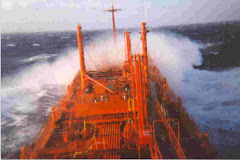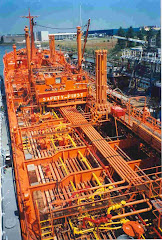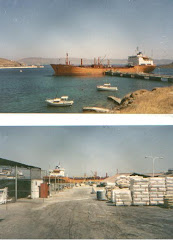Last December, former banker and well regarded dean of Greek shipping finance, Ted Petropoulos, railed against private equity shipping partnerships, arguing they were entirely incompatible. Yet 2013 proved an incredibly fertile year, where the capital markets window again opened for the shipping sector and private equity partnerships in the shipping space flourished. The predominate investor premise was cyclical asset arbitraging, where investors were convinced to place millions of dollars into shipping assets that they feel are under-priced and certain to rise substantially in value in a few years for hefty and quick profits. Will these ventures justify investor expectations or will many of them end in bad marriages, vindicating the views of Ted Petropoulos?
Working with NY investment banking firms, the dichotomy between their due diligence vetting and actual placement of funds is striking. Due diligence procedure vets the management team and their past performance as an operating company. It centers on balance sheet analysis and particularly profit and loss performance.
Yet when these organizations move to the actual placements, the whole emphasis is in asset speculation, with little or no interest in operational profitability. Often institutional money is happy to fund start-ups, where the management team sometimes even puts up relatively little or no money and often does not have much past operating record in the assets purchased. Big ticket name deals abound, centering on well-known shipping personalities - even sometimes with histories of hefty losses in previous ventures that led to bankruptcy and restructuring. The predominate business model is bond trader portfolio, where in this case it is shipping assets. To some degree, it is a country club approach with house entry barriers and old-boy favoritism.
If the main thrust of the venture is asset speculation rather than building enterprise value, then – of course - past ventures do not really matter so much. In bond trading, a common way to deal with losses is simply to double up and/or close out the past losing positions and move to new asset positions. Enterprise building is not of any importance.
What drives the investment banking industry is fees, so that the larger the deal, the more money and it is easier to place a large deal with a well-known name in NY circles.
The whole emphasis is in quick turn over where shares rise on expectations and are sold ultimately to retail investors, The loss risk is on those who hold the shares on a long term basis. Indeed if we look at shipping shares from the last bull period up until the 2008 meltdown, many of these companies ultimately became penny stocks, but a significant number of institutional investors sold their shares and took their profits, rather than holding the shares.
The irony, however, is that whilst maximization of profit in asset speculation depends on high market volatility, arbitraging reduces the very volatility on which the profits are generated. So theoretically, the more asset arbitraging positions in shipping assets, the less volatility in market pricing for shipping assets and lower profits as the arbitraging process levels out market pricing.
There are other deeper looming problems, however, that may prove analogous to the iceberg that sunk the Titanic. This is related to the credit crunch and damaged banking system that has created a shortage of money to finance vessel purchases. Right now is very much a 'have and have-not' market for shipping companies that is reducing the universe of potential buyers. We have already seen a few block purchase deals fail for inability to raise funds. This might create a drag on any repeat of the musical chairs block shipping asset deals of the previous decade that made major shipping fortunes until the 2008 meltdown.
Major investors like Wilbur Ross ardently sponsor industry consolidation. The theory is that few players would also better pricing power. In fact, this has been a predominate trend in the ship supplier space for many years. Telecommunications was extremely competitive with a large number of entrants and now there has been price consolidation with the stronger players, buying out the weaker smaller players, etc. Marine engine makers are now reduced to two major groups: Wartsila and MAN. This again, however, means a smaller universe of players to purchase shipping assets.
Particularly detrimental to the resale market - especially for older units - would be the demise of the small and medium shipping companies, who are currently starved of bank credit. This is inhibiting them from properly rolling over and renewing their fleets by selling off the older units often for scrap and buying somewhat younger second-hand units. There have been an increasingly larger number of cash deals, but deal volume is down. Many companies will be forced to trade out their older assets and leave the shipping space. This means potentially a smaller market for older tonnage and lower values.
In a slack demand environment where we are possibly at the end of a globalization cycle and particularly in the case of lower than anticipated Chinese and emerging market growth rates that seems to be the case this year, this surge of investment in new buildings may be very good for the environment with a more modern fleet of new energy efficient vessels. Institutional investment in shipping assets also may be very beneficial to shippers, ensuring a more an adequate supply of vessels for future transport demand at low, competitive freight rates.
In the end, however, the investors in this floating real estate may be disappointed with many of these shipping ventures, following the pattern Diamond S with a much longer time than anticipated for any quick profitability and divestiture. The ultimate in this respect would be an international shipping space that begins to resembles the domestic US Jones Act environment (prior the shale oil renaissance) where there was essentially an oligarchic structure of a very limited number of players – half of them constantly in and out of Chapter 11 bankruptcy reorganization - and very marginal profitability at best.
Realistically, there will probably always be a certain amount of fragmentation in the shipping industry. If there are not expected results, the institutional money may begin to follow the course of the major oil companies, who divested of their shipping assets some years ago because the shipping investments were a drag on their balance sheets and it was a better use of capital to charter in the vessels from independent operators rather than to get into the transport business themselves.








